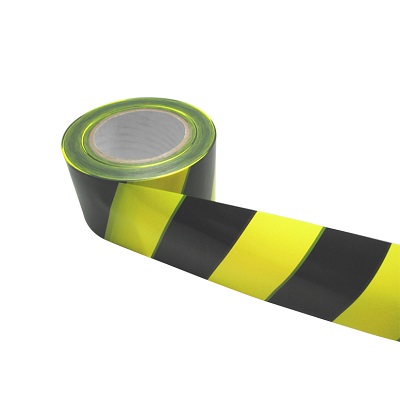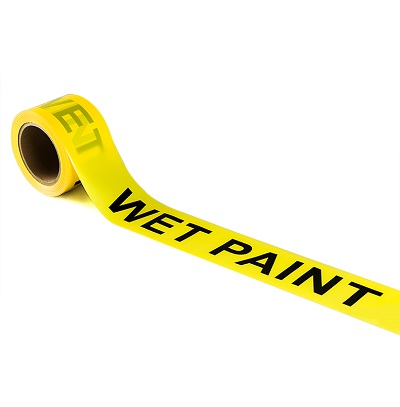Barricade tape is commonly used as a visual and physical obstruction intended to warn and limit access to a particular area.
Some of the most common types of barricade type are:
- Yellow – Indicating caution should be exercised
- Red – Indicating danger
Yellow Caution/Warning Tape
Areas cordoned off by yellow caution/warning tape are areas of lower degrees of health and safety concern.
Examples of concerns may include:
- House, cables or obstructions on the ground
- Noise
- Heavy equipment in use
- A congested work area
Unless otherwise specifically written on the tape or specifically signed around the tape yellow barricade tape can mean ‘enter but proceed with caution when in the area’.

Red Danger Tape
Areas cordoned off by red danger tape are areas of high concern or where immediate danger is present.
Examples of dangers may include:
- Overhanging loads
- Suspended loads
- Work being performed overhead
- High noise exposure
- Open holes
- Fall protection required
- Confined space entry
Red danger barricade tape means ‘do not enter under any circumstances, without permission from a controlling supervisor who deems it safe to do so’.

When to Use Barricade Tape
Barricade tape is versatile and can be used in a variety of scenarios, below are some examples of when it should be used.
- To identify work sites, construction hazard areas, perimeters and the presence of any excavation work
- To seal off areas where work equipment, private vehicles, supplies, materials and debris are being stored
- Hang caution tape from overhanging plumbing or obstructions to warn workers to reduce the likelihood of them bumping their head
- To outline restricted areas
Barricade Tape Best Practice Guidelines and Tips
Below are some best practice guidelines and tips when using barricade tape.
- A qualified or competent person should install the tape and instruct workers not to cross over or under the tape while it is cordoning off an area unless it is an emergency or when work in progress requires them to enter
- Use strong high quality barricade tape
- Any wording on the tape should easily identify any hazard
- The tape should be reusable, giving the option of moving it to accommodate changing worksite conditions or locations
- All barricade tape shall have a sign posted (next to or on the tape) with at least the following information: hazard identity, point of contact, contact information
- Never remove barricade tape unless authorised to do so, it the tape is torn or broken replace it with new tape immediately
- Notify supervisors when tape supplies need replenishment so spare tape is always on hand to cordon off new hazards or replace torn or damaged tape
- When a hazard or task is no longer present remove and safely dispose of tape as appropriate to eliminate any confusion

We supply a large range of barricade tape including red ‘danger‘ and yellow caution variations along with painter exclusive ‘wet paint’ variants.
The high quality, high strength tapes are available in rolls of 50m and 100m lengths and are available at competitive prices with shipping Australia wide.
Keep your workers and worksite safe with barricade safety tapes from Adaptalift Store along with a wide variety of other high quality PPE and safety tapes.
